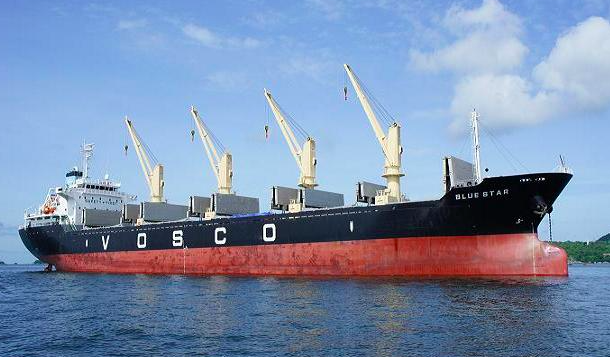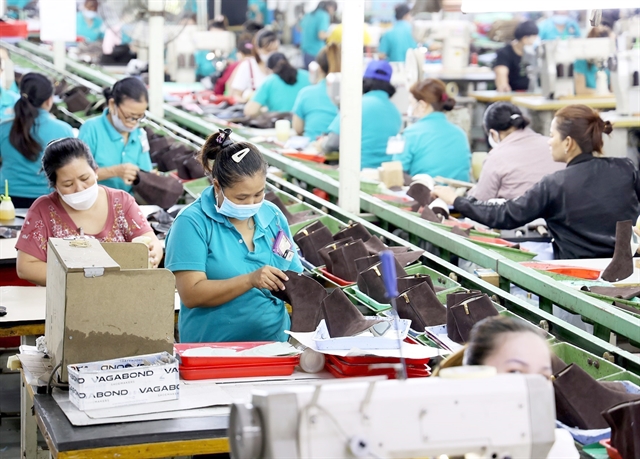 Economy
Economy

 |
| Footwear produced at Gia Định Group in HCM CIty. The EU is the biggest market for Vietnamese footwear products. — VNA/VNS Photo Hồng Đạt |
HÀ NỘI — The European Green Deal will likely affect several Vietnamese industries, depending on the nature of the industry and the specific measures introduced under the deal, a senior trade official has said.
The deal is a set of policies that includes new measures and efforts to transform the EU’s economy for a sustainable future.
These measures will not limit the bloc to increase its climate ambition for 2030 and 2050; supply clean, affordable and secure energy; mobilise industry for a clean and circular economy; and build and renovate in energy and resource-efficient way.
They will also accelerate the shift to sustainable and smart mobility; design a fair, healthy and environmentally-friendly food system; preserve and restore ecosystems and biodiversity; aim at zero pollution for a toxic-free environment; pursue green finance and investment and ensure a just transition.
According to Nguyễn Hoàng Thúy, Trade Counselor at Việt Nam Trade Office in Sweden (Concurrently Denmark, Finland, Iceland, Norway, and Latvia), the garment and footwear would be two industries that might be affected by this deal as the EU was the biggest market for Vietnamese garment and footwear products.
The deal would require apparel products manufactured through environmentally friendly processes and made with environmentally friendly materials. They would be required to meet sustainable and strict eco-labeling standards. Thus, Vietnamese businesses in this sector needed to adjust their production processes and invest in new technologies to stay competitive, Thuý told congthuong.vn.
At the same time, the packaging needed to be made of environmentally friendly materials and could be fully recycled. She said that this would affect Vietnamese businesses in the field and those using packaging for export products.
The official also outlined agriculture and seafood as other sectors that the deal could influence.
She explained that the deal set out a more sustainable and environmentally friendly approach to agriculture, which would require Vietnamese businesses to meet new standards for sustainable food production and farming practices, invest in new technology and change manufacturing processes to reduce waste and the use of hazardous chemicals.
As the deal set a target to reduce the use of energy-intensive materials and switch to more sustainable materials, the iron and steel would be an affected sector.
Despite posing challenges for Vietnamese exporters, the deal would also provide them with new business opportunities. Businesses needed to be aware of the changes that the deal would bring and be ready to adapt to the challenges to remain competitive in the EU market, Thuý said.
She suggested the firms stay informed about the latest developments in the deal, assess its potential impact on their business operations and exports, and identify any areas that might need improvement to meet the new sustainability standards.
She said they should also consider reducing greenhouse gas emissions, increasing energy efficiency, and using recycled materials, advising them to anticipate new trends to create more sustainable and environmentally friendly products in the long run.
At the same time, the Vietnamese Government should develop policies and regulations that would facilitate the transition to a more sustainable and environmentally friendly economy, such as promoting renewable energy and adopting energy-efficient technologies.
She petitioned the State to urgently develop a policy to monitor and issue carbon certificates for Vietnamese producers and exporters.
Top priority should be also given to monitoring and assessing the impact of the deal on the Vietnamese economy, especially the most vulnerable sectors, and taking all necessary steps to address any challenges or opportunities that might arise.
Providing financial, technical and training support to businesses, especially small-and medium-sized, to help them adopt more sustainable practices and improve their competitiveness in the EU market should be also included.
The trade turnover between Việt Nam and the EU reached US$76.3 billion last year, a year-on-year increase of 5.1 per cent, according to the European-American Market Department under the Ministry of Industry and Trade (MoIT).
Of this, exports hit $56 billion, up 10.2 per cent compared with the 2021’s figure, it said.
Việt Nam's trade surplus with the European market hit $35.5 billion last year.
The EU is currently Việt Nam's leading trade partner and third largest export market with an annual export growth rate of 7.5 per cent, accounting for 13.6 per cent of the Southeast Asian country’s total export turnover in the 2015-21 period.
The market share of Vietnamese goods in the EU's total imports is 1.8 per cent, higher than that of other Southeast Asian countries such as Malaysia (1.2 per cent), Thailand (0.9 per cent), Indonesia (0.7 per cent) and Singapore (0.7 per cent), according to the European Statistics Agency (Eurostat). — VNS